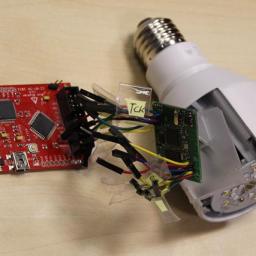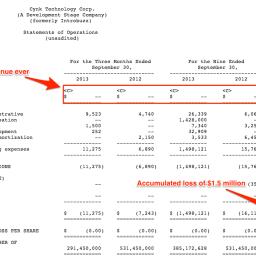If you haven't heard of Atom already, now's a good chance to get acquainted.
It's GitHub's open source editor, and it's pretty awesome.
The developers behind it write:
At GitHub, we're building the text editor we've always wanted. A tool you can customize to do anything, but also use productively on the first day without ever touching a config file. Atom is modern, approachable, and hackable to the core. We can't wait to see what you build with it.
It's different from traditional text editors in a couple of important ways, including a web-based core and Node.js integration. Atom is "A hackable text editor for the 21st Century." It is built on node and chromium and is very easy to extend and customize. Best of all,
it is now available on Windows.
I have been using it on OS X for several months and like it a lot. It is great for ruby, python, html, etc. One of its few shortcomings is that it really isn't great for editing very large text files - megabytes of logs, for example. It's been available for Mac OSX for a while already. And for those linux users who do not want to wait for an official release, there is a build howto
here.
Curious, or ready to start coding?
Here are five tips for getting started.

This week's
Monday poll showed general consensus that scientists should be focusing on energy technology. Looks like some of them are doing just that, and who better to deal with heat and huge flames than a rocket scientist?
The
Telegraph reports that
a rocket scientist from Oxford University has reinvented the saucepan. The new design, developed by
Dr. Thomas Povey, has regular channels incorporated into the pan's sides which allows heat delivered to the base to be captured more efficiently as it moves upwards around the pan's sides and testing indicates that it requires forty percent less energy to achieve equivalent cooking results compared with previous saucepan designs. According to the article, Dr. Povey originally hoped to improve the efficiency of cooking in the outdoors, but decided to develop his new
Flare Pan design when he realized that the domestic market could also benefit.
A short
summary video on the development and testing of Dr. Povey's new Flare Pan design is available on the Oxford University website.
[ed. note: the appropriate way to test this pan is with some good bacon, and as mentioned
here, with a case of beer, for science.]

Manufacturers and the easily-excited tech media are more excited than ever to push us into the world of the "Internet of Things," in which common appliances can all communicate with us over (presumably) TCP/IP. I have yet to see why this is useful for anyone other than appliance manufacturers, who will have a reason to sell us new versions of everything we already own.
But here's another reason to be suspect:
the folks building out the latest smart devices seem to have avoided learning any lessons from the security flaws we have been working out of the last wave of devices (computers, phones, routers). This article asks, "How many security researchers does it take to hack a [smart] lightbulb?" and concludes: not very many at all.
Routers are an obvious target for hackers as they are intrinsically linked to the Internet making it possible for hackers to compromise them from a distance, but less attention has been given to some of the other network-enabled devices cropping up in people's homes. Once a hacker has access to a person's home network they have access to any device connected to it, and with an increasingly diverse suite of devices coming online the potential to break down the barrier between the cyber and the physical worlds is getting ever greater.
To demonstrate the concept, Context's senior managers bought a case of beer and five network-enabled consumer devices from a mixture of start-ups and established vendors, configured them with the recommended security settings, set up a secure wi-fi network and set their best and brightest cyber-security researchers to the task of hacking this mock smart home.
Don't feel bad though that the new Internet of Things has been delivered pre-rooted.
Your new Android Wear watch just got rooted too. Hopefully they'll invent "smart underwear" too so that can get rooted upon arrival: then we'll
really be vulnerable.
[Ed. note: Kudos to this research team, by the way, for ensuring their study was accompanied by a case of beer - an important part of any tech research, in my opinion.]

Sports bring about advances in technology too, although less frequently and all too often, chemically. But after watching the last couple of matches of FIFA World Cup 2014, I thought I'd look into what new technologies were being used or had been put into usage in order to present the World Cup.
Here are five bits of technology being used in this cup, but be warned, one of them is the frikkin' "Twitter Wall," which I'm not sure counts as innovation.
Stick around though. In another 35 years,
if these guys' prediction is correct, we'll have FIFA robots playing their own World Cup, and we can bet our money on which robotic team will win it. Hopefully by that time we'll all be getting back and forth to work on an advanced version of these
rocket skates too, if only to ensure we can still outrun the robots.

If the tech market experienced a bit of a downturn not long ago, it would now seem it's on the rebound, and investors are looking for the next dot-com miracle. The proof? Stocks like this one.
Check out the CYNK stock, linked to a company called Introbiz.
Registered in Belize, chartered in Nevada, one employee, totally opaque financial statements. Zero revenue, $1.5M in operating losses. No assets. And yet,
the stock is up 25,000% from $0.10 to $14 per share in the last 16 days.What does the site do? Looks like an ersatz social networking firm with a vague charter of connecting you to famous people. No idea how, who, or where. This is a bubble at its finest, and you know what they say about a fool and his money ...



